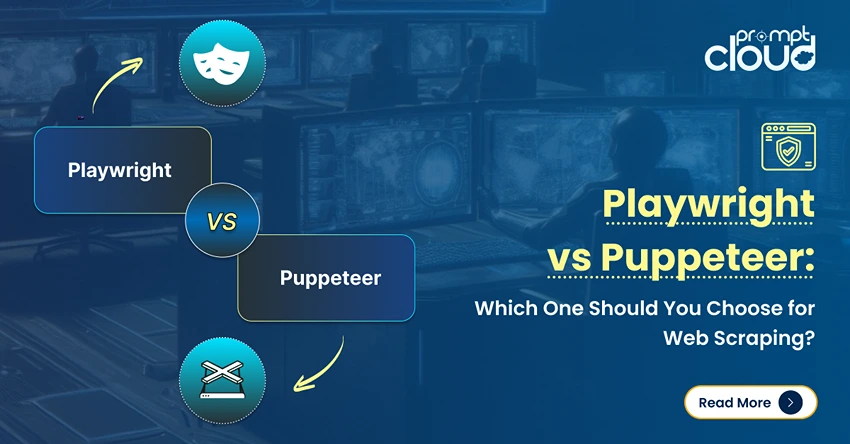Web crawling bots, also known as ants, automatic indexers, web spiders or web robots, are automated scripts that scan through web pages to extract data periodically (or in real-time). The process itself is called web crawling. Although web crawling bots are sometimes used for other purposes as well, such as web indexing (by companies like Google), the most common use is web scraping for data extraction.
Inception of Web Crawling Bots
Bots were born due to the need for search engines to optimize their indexing strategies. But today, even an online grocery with a team of fifty is using web crawling bots to get better data about competitors and modify their operations accordingly. Some of these companies have a small team to handle the web crawling bots and the management itself is new to the use of technological advancements to solve business problems.
Hence, if you are a part of a company that is using, or planning to use web crawling bots, whether using an internal team or through outsourcing it to an experienced web scraping service provider like PromptCloud, there are certain important points that should be kept in mind when designing bots.
What makes a Good Web Crawling Bot
1. Easily adapt to website changes
This is easier said than done, and mostly never 100% accurate. But to a certain limit, web crawling bots should be able to adapt to small changes in websites. For example, if there are small HTML/CSS based styling changes for all pages in a website, the bot should be able to crawl webpages. Analyze and recognize the same change in all of them and put the change into its memory, so as to use it henceforth. This can be achieved by incorporating some basic ML concepts into the crawler program.
2. Scrape data from web pages at high speed
Speed is just as important as quality when you crawl the web for thousands (or even millions) of web pages from tens (or hundreds) of websites. Hence your crawler bot should be lightweight enough to process pages fast, so as to run at more frequent intervals, or in real-time, as per needs.
3. Be light on the processor
The web crawler bot that you use should be light in its processing needs. This can be achieved through various methods such as vectorisation or processing only parts of web pages that are important. A lightweight bot is not just faster but also helps keep your infrastructure costs (which is mostly cloud-based these days) down.
4. Be able to form multiple instances automatically
Say you need to crawl ten thousand web pages. An instance of your crawler can crawl 10 in a second. But your processor can actually support up to 5 of these webpage crawlers running at the same time. Hence your time required would be 5 times lesser if you run as many threads of your webpage crawlers as your processor can handle.
Thus, using a web crawling that can run multiple threads based on the processor conditions would be much more suitable for heavy needs such as real-time search based scraping of multiple websites.
5. Use the header of a browser to avoid being detected and blocked
Though web scrapers aren’t what one might call “illegal”, it is often blocked by websites when recognized. This situation can be avoided easily if your crawl-bot always sends a header with a web browser title whenever sending an HTTP request to get back the HTML page.
6. Learn from existing patterns and identify similar ones
When you are scraping the web for 10 different e-commerce pages, adding the 11th one should be easier and there should be a small amount of self-learning. The web scraper bot should be configured to understand so as to learn from existing patterns and identify similar ones.
7. Know how to separate and store data of different formats
Data from the web can turn out to be highly unstructured in most cases. However, web-bots should be able to handle, sort and separately store data of different formats such as text, web-links, images, videos and more. Scraping data that is of no use unless the data is sorted and placed in proper repositories.
8. Not crash on finding a roadblock
It is not always possible for a web scraper to run successfully. If it is scraping 10,000 web pages a day, chances are high that few of them would fail. But these failures should be logged for a manual check later on, and shouldn’t result in a system breakdown. Web scraping bots should be able to easily skip pages that it simply cannot crawl.
9. Be simple to maintain or add new rules
If you are scraping multiple websites and need to add a few more, or if the website that you needed to crawl in real-time has undergone some major changes; chances are that you need to make some serious changes to your web scraping bot. However, if those changes are minimal, and simple to explain in business terms, it would be faster to put the changes into the code or make changes in the configuration file.
10. Scale as per requirements
Most applications run on the cloud so as to make sure that there is minimal downtime, they can handle a heavy load, and save on buying and maintaining heavy infrastructure. If you are deploying your web-scraping bot in the cloud (such as in an AWS EC2 instance), you should make sure that your bot can scale up (or down), to speed up things when required and also to ramp down when not, so as to save money and be more efficient at the same time.
11. Clean up dirty data (to some extent)
Web data is one of the most unstructured data that there is. However, automated web-bots can’t be expected to clean the data they extract completely, yet!
However, they should be able to check for basic validations, such as an email should follow a specific format, or the phone number of a place should have a specific number of digits. This information should be built into the crawling bot’s knowledge repository so as to ensure cleaner data and easier data use.
12. The code should preferably be in a popular language
Say you get a two-member team to design your web crawler, and they get it up and running. However, both of them leave the organisation at a certain time. You bring in new developers, but unfortunately, the codebase for the bot is in a very uncommon programming language and hence developers for it are hard to find.
That is why it is important that the code for the bot should be in a language that is popular and has good community support. Although this isn’t a requirement as such, following this can be highly beneficial in the long run.
Conclusion
Getting a web crawling bot in place so as to look after your web scraping needs seems like a one-time solution, but is it? Bots need regular maintenance, crash support, system updates, configuration updates, and manual tweaks to accommodate new rules.
If you are a non-tech business, it is highly recommended that you take the help of a Data as a Service provider like PromptCloud who can make data gathering and integration a seamless process for your company.



















